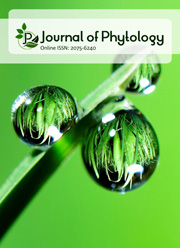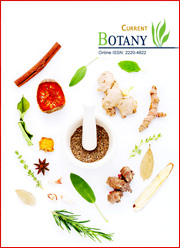Effect of sprouting on reduction of anti-nutritional factor in pearl millet and its potential application in food industry
DOI:
https://doi.org/10.25081/jp.2024.v16.9347Keywords:
Pearl millet, Sprouted flour, Iron, Na/K, NoodlesAbstract
Pearl millet (Pennisetum glaucum) is a nutritionally rich, gluten-free grain with numerous health benefits, including high levels of essential amino acids, iron, zinc, and proteins. In addition, gluten-free foods made from pearl millet can help improve digestion and reduce inflammation for those sensitive to gluten. Despite its high nutritional potential, pearl millet remains underutilized in the food industry. This is partly due to the presence of anti-nutritional factors such as tannins and phytates, which lower nutrient digestibility and bioavailability. This study aimed to optimize sprouting conditions in three pearl millet genotypes viz., CO (Cu) 9, TNAU cumbu hybrid CO 9 and CO 10 to enhance nutrient availability and reduce these anti-nutritional factors. Results indicated that 12 hr soaking and 24 hr sprouting significantly reduced tannin and phytate levels while increasing nutrient bioavailability, particularly in TNAU cumbu hybrid CO 9 and CO 10. Sprouted flour of TNAU cumbu hybrid CO 9 and CO 10 recorded an increase in iron of 73.60 and 72.58 ppm and zinc of 46.56 and 46.34 ppm respectively. Besides sprouted flour had less than 1.00 Na/K ratio which might favour the regulation of blood pressure. These sprouted flour samples were then used to formulate gluten-free noodles, with different composite flours using corn flour and tapioca starch in different ratios, further texture and sensory evaluation was conducted and a 50:50 ratio of sprouted pearl millet flour and corn flour was found to be desirable. The research highlights pearl millet’s potential as a valuable, gluten-free food source with broader applications in health-conscious and specialty food markets.
Downloads
References
Anitha, S., Kane-Potaka, J., Botha, R., Givens, D. I., Sulaiman, N. L. B., Upadhyay, S., Vetriventhan, M., Tsusaka, T. W., Parasannanavar, D. J., Longvah, T., Rajendran, A., Subramaniam, K., & Bhandari, R. K. (2021). Millets Can Have a Major Impact on Improving Iron Status, Hemoglobin Level, and in Reducing Iron Deficiency Anemia-A Systematic Review and Meta-Analysis. Frontiers in Nutrition, 8, 725529. https://doi.org/10.3389/fnut.2021.725529
Asiedu, E. S. S., Kpodo, F. M., Owusu, N. K., Dzah, C. S., Nyasordzi, J., Awude, E., & Kortei, N. K. (2024). Influence of milling processing on mineral and proximate composition of maize products. Future Postharvest and Food, 2024, 1-7. https://doi.org/10.1002/fpf2.12037
Bhuvaneshwari, G., Nirmalakumari, A., & Kalaiselvi, S. (2020). Impact of soaking, sprouting on antioxidant and anti-nutritional factors in millet grains. Journal of Phytology, 12, 62-66. https://doi.org/10.25081/jp.2020.v12.6384
Butler, L. G. (1992). Antinutritional effects of condensed and hydrolyzable tannins. In R. W. Hemingway & P. E. Laks (Eds.), Plant Polyphenols: Synthesis, Properties, Significance (Vol. 59, pp. 693-698) New York, USA: Springer. https://doi.org/10.1007/978-1-4615-3476-1_40
Cámara, F., & Amaro, M. A. (2003). Nutrional aspect of zinc availability. International Journal of Food Sciences and Nutrition, 54(2), 143-51. https://doi.org/10.1080/0963748031000084098
Chung, K.-T., Wong, T. Y., Wei, C.-I., Huang, Y.-W., & Yuan, L. (1998). Tannins and human health: a review. Critical Reviews in Food Science and Nutrition, 38(6), 421-464. https://doi.org/10.1080/10408699891274273
Davies, N. T., & Reid, H. (1979). An evaluation of the phytate, zinc, copper, iron and manganese contents of, and Zn availability from, soya-based textured-vegetable-protein meat-substitutes or meat-extenders. British Journal of Nutrition, 41(3), 579-589. https://doi.org/10.1079/BJN19790073
Dendy, D. A. V. (1995). Sorghum and Millets: Chemistry and Technology. Madison, University of Wisconsin: American Association of Cereal Chemists.
Devi, C. B., Kushwaha, A., & Kumar, A. (2015). Sprouting characteristics and associated changes in nutritional composition of cowpea (Vigna unguiculata). Journal of Food Science and Technology, 52(10), 6821-6827. https://doi.org/10.1007/s13197-015-1832-1
Duhan, A., Khetarpaul, N., & Bishnoi, S. (2002). Content of phytic acid and HCl-extractability of calcium, phosphorus and iron as affected by various domestic processing and cooking methods. Food Chemistry, 78(1), 9-14. https://doi.org/10.1016/S0308-8146(01)00144-3
Dykes, L., & Rooney, L. W. (2006). Sorghum and millet phenols and antioxidants. Journal of Cereal Science, 44(3), 236-51. https://doi.org/10.1016/j.jcs.2006.06.007
Gabaza, M., Shumoy, H., Muchuweti, M., Vandamme, P., & Raes, K. (2018). Iron and zinc bioaccessibility of fermented maize, sorghum and millets from five locations in Zimbabwe. Food Research International, 103, 361-70. https://doi.org/10.1016/j.foodres.2017.10.047
Gasparre, N., & Rosell, C. M. (2019). Role of hydrocolloids in gluten free noodles made with tiger nut flour as non-conventional powder. Food Hydrocolloids, 97, 105194. https://doi.org/10.1016/j.foodhyd.2019.105194
Hymavathi, T. V., Thejasri, V., & Roberts, T. P. P. (2019). Enhancing cooking, sensory and nutritional quality of finger millet noodles through incorporation of hydrocolloids. International Journal of Chemical Studies, 7(2), 877-881.
Kayodé, A. P. P., Hounhouigan, J. D., & Nout, M. J. R. (2007). Impact of brewing process operations on phytate, phenolic compounds and in vitro solubility of iron and zinc in opaque sorghum beer. LWT - Food Science and Technology, 40(5), 834-841. https://doi.org/10.1016/j.lwt.2006.04.001
Kumar, A., & Singh, D. P. (1998). Use of physiological indices as a screening technique for drought tolerance in Oilseed Brassica Species. Annals of Botany, 81(3), 413-420. https://doi.org/10.1006/anbo.1997.0573
Majid, I., & Nanda, V. (2017). Effect of sprouting on the physical properties, morphology and flowability of onion powder. Journal of Food Measurement and Characterization, 11, 2033-2042. https://doi.org/10.1007/s11694-017-9586-2
Mudgil, D., Barak, S., & Khatkar, B. S. (2016). Optimization of textural properties of noodles with soluble fiber, dough mixing time and different water levels. Journal of Cereal Science, 69, 104-110. https://doi.org/10.1016/j.jcs.2016.02.015
Naorem, A., Saritha, M., Doodhawal, K., Jaajpera, T., Ram, B., Kumar, S., Panwar, N. R., & Meena, K. K. (2023). Pearl Millet (Pennisetum glaucum L.) Research in India: A scientometric journey through the last two decades (2000-2022). Annals of Arid Zone, 62(1), 1-17. https://doi.org/10.59512/aaz.2023.62.1.1
Nehir El, S., & Simsek, S. (2012). Food technological applications for optimal nutrition: an overview of opportunities for the food industry. Comprehensive Reviews in Food Science and Food Safety, 11(1), 2-12. https://doi.org/10.1111/j.1541-4337.2011.00167.x
Obadi, M., & Xu, B. (2021). Review on the physicochemical properties, modifications, and applications of starches and its common modified forms used in noodle products. Food Hydrocolloids, 112, 106286. https://doi.org/10.1016/j.foodhyd.2020.106286
Owheruo, J. O., Ifesan, B. O. T., & Kolawole, A. O. (2019). Physicochemical properties of malted finger millet (Eleusine coracana) and pearl millet (Pennisetum glaucum). Food Science & Nutrition, 7(2), 476-482. https://doi.org/10.1002/fsn3.816
Pompano, L. M., Luna, S. V., Ghugre, P. S., Przybyszewski, E. M., & Haas, J. D. (2022). Iron-biofortified pearl millet consumption increases physical activity in Indian adolescent schoolchildren after a 6-month randomised feeding trial. British Journal of Nutrition, 127(7), 1018-1025. https://doi.org/10.1017/S000711452100180X
Pushparaj, F. S., & Urooj, A. (2011). Influence of processing on dietary fiber, tannin and in vitro protein digestibility of pearl millet. Food and Nutrition Sciences, 2(8), 895-900. https://doi.org/10.4236/fns.2011.28122
Raboy, V. (2003). myo-Inositol-1, 2, 3, 4, 5, 6-hexakisphosphate. Phytochemistry, 64(6), 1033-1043. https://doi.org/10.1016/S0031-9422(03)00446-1
Raboy, V., Gerbasi, P. F., Young, K. A., Stoneberg, S. D., Pickett, S. G., Bauman, A. T., Murthy, P. P. N., Sheridan, W. F., & Ertl, D. S. (2000). Origin and seed phenotype of maize low phytic acid 1-1 and low phytic acid 2-1. Plant Physiology, 124(1), 355-368. https://doi.org/10.1104/pp.124.1.355
Reddy, N. R., Sathe, S. K., & Salunkhe, D. K. (1982). Phytates in legumes and cereals. Advances in Food Research, 28, 1-92. https://doi.org/10.1016/S0065-2628(08)60110-X
Sade, F. O. (2009). Proximate, antinutritional factors and functional properties of processed pearl millet (Pennisetum glaucum). Journal of Food Technology, 7(3), 92-97.
Shahidi, F., & Naczk, M. (2003). Phenolics in Food and Nutraceuticals. (2nd ed.). Boca Raton, Florida: CRC Press. https://doi.org/10.1201/9780203508732
Singh, S., Manwaring, H. R., Naveen, A., Hegarty, M., & Yadav, R. S. (2024). Genetic dissection of minerals and phytate content in pearl millet germplasm panel using genome‐wide association study. Food and Energy Security, 13(4), e565. https://doi.org/10.1002/fes3.565
Slama, A., Cherif, A., Sakouhi, F., Boukhchina, S., & Radhouane, L. (2020). Fatty acids, phytochemical composition and antioxidant potential of pearl millet oil. Journal of Consumer Protection and Food Safety, 15, 145-51. https://doi.org/10.1007/s00003-019-01250-4
Thompson, L. U. (1993). Potential health benefits and problems associated with antinutrients in foods. Food Research International, 26(2), 131-149. https://doi.org/10.1016/0963-9969(93)90069-U
Velu, G., Ortiz-Monasterio, I., Cakmak, I., Hao, Y., & Singh, R. P. (2014). Biofortification strategies to increase grain zinc and iron concentrations in wheat. Journal of Cereal Science, 59(3), 365-72. https://doi.org/10.1016/j.jcs.2013.09.001
Vijayakumari, K., Pugalenthi, M., & Vadivel, V. (2007). Effect of soaking and hydrothermal processing methods on the levels of antinutrients and in vitro protein digestibility of Bauhinia purpurea L. seeds. Food Chemistry, 103(3), 968-975. https://doi.org/10.1016/j.foodchem.2006.07.071
Published
How to Cite
Issue
Section
Copyright (c) 2024 Mridula Senthil, S. M. Indhu, K. Iyyanar, S. Vellaikumar, Karthika Rajendran

This work is licensed under a Creative Commons Attribution 4.0 International License.





 .
.